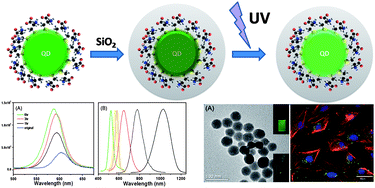Homogenous, far-reaching tuning and highly emissive QD–silica core–shell nanocomposite synthesized via a delay photoactive procedure; their applications in two-photon imaging of human mesenchymal stem cells†
Abstract
In this article, we present the exploration of a facile synthetic tactic incorporating delay-photo-


 Please wait while we load your content...
Please wait while we load your content...